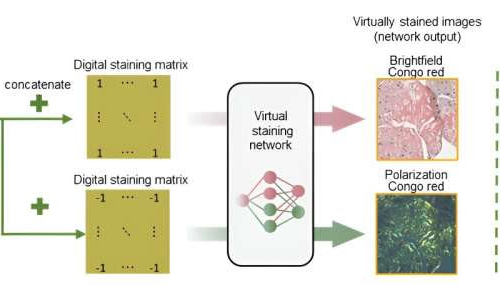News Release 2-Oct-2024 Peer-Reviewed PublicationUniversity of Surrey The time of day when blood is taken can affect the results of tests for diagnosing dementia, according to new research led by the University of Surrey. Researchers found that the biomarkers used to diagnose Alzheimer’s, including a promising marker for early diagnosis of the condition, varied significantly...
Category: <span>Diagnostic</span>
Study suggests harmful diagnostic errors may occur in 1 in every 14 general medical hospital patients
October 1, 2024 by British Medical Journal Harmful diagnostic errors may be occurring in as many as 1 in every 14 (7%) hospital patients—at least those receiving general medical care—suggest the findings of a single center study in the US, published online in the journal BMJ Quality & Safety. Most (85%) of these errors are...
Researchers suggest rethinking ‘cancer’ label for early-stage prostate changes
A new paper in the Journal of the National Cancer Institute indicates that patients may benefit if doctors stop calling certain early-stage changes to the prostate “cancer” at all. The paper is titled “When is prostate cancer really cancer?”. Prostate cancer is the second leading cause of cancer death worldwide in men, but far more...
AI ‘liquid biopsies’ using cell-free DNA, protein biomarkers, could aid early detection of ovarian cancer
News Release 30-Sep-2024 Peer-Reviewed PublicationJohns Hopkins Medicine A blood test that uses artificial intelligence (AI) to detect cancer-related genetic changes and protein biomarkers could help screen women for early signs of ovarian cancer, according to a study by researchers at the Johns Hopkins Kimmel Cancer Center in collaboration with several other institutions in the United...
Using mammograms to detect heart disease
September 30, 2024 by University of California – San Diego In a new study published Sept. 27 in JACC: Advances, researchers with University of California San Diego School of Medicine have found that mammograms could be used as a predictor of cardiovascular disease in women. The retrospective study reviewed nearly 20,000 anonymized mammograms to measure...
Organoids derived from gut stem cells reveal two distinct molecular subtypes of crohn’s disease
News Release 26-Sep-2024 Discovery could pave the way for personalized therapeutics to treat the chronic inflammatory bowel disease Peer-Reviewed PublicationUniversity of California – San Diego Histology images of patient-derived organoids: healthy (left), Crohn’s disease SF2CD subtype (middle) and Crohn’s disease IDICD (right). Image courtesy of Pradipta Ghosh. Credit: UC San Diego Health Sciences Crohn’s disease...
Tumor-specific antibodies able to detect melanoma in its earliest stages, new study shows
September 25, 2024 by European Academy of Dermatology and Venereology Innovative research has unveiled promising advancements in melanoma detection, which could significantly enhance diagnosis and prognosis by identifying the disease at its earliest, most treatable stages. This new method, presented today at the European Academy of Dermatology and Venereology (EADV) Congress 2024, uses tumor-specific profiling...
Colonoscopies among the young are on the rise
Colon cancers are increasing among younger Americans, so much so that experts advised in 2021 that colonoscopy screening begins at the age of 45, not 50 as had been previously recommended. Now, research shows the new guideline may have led to a tripling in the use of the gold-standard screen among folks ages 45 to...
AI-based tissue staining can detect amyloid deposits without chemical stains or polarization microscopy
September 16, 2024 by UCLA Engineering Institute for Technology Advancement Virtual birefringence imaging and histological staining of amyloid deposits in label-free tissue. Virtual staining network and digital staining matrix framework generate two output images (brightfield and birefringence image channels), eliminating the need for polarization imaging and traditional chemical stains like Congo red used in clinical...
Delayed Bleeding: The Silent Risk for Seniors
Robert D. Glatter, MD; Richard D. Shih, MD; Christina L. Shenvi, MD, PhD, MBA DISCLOSURES | August 30, 2024 This discussion was recorded on August 2, 2024. This transcript has been edited for clarity. Robert D. Glatter, MD: Hi. I’m Robert Glatter, medical advisor for Medscape Emergency Medicine. Today, we’ll be discussing the results of...

